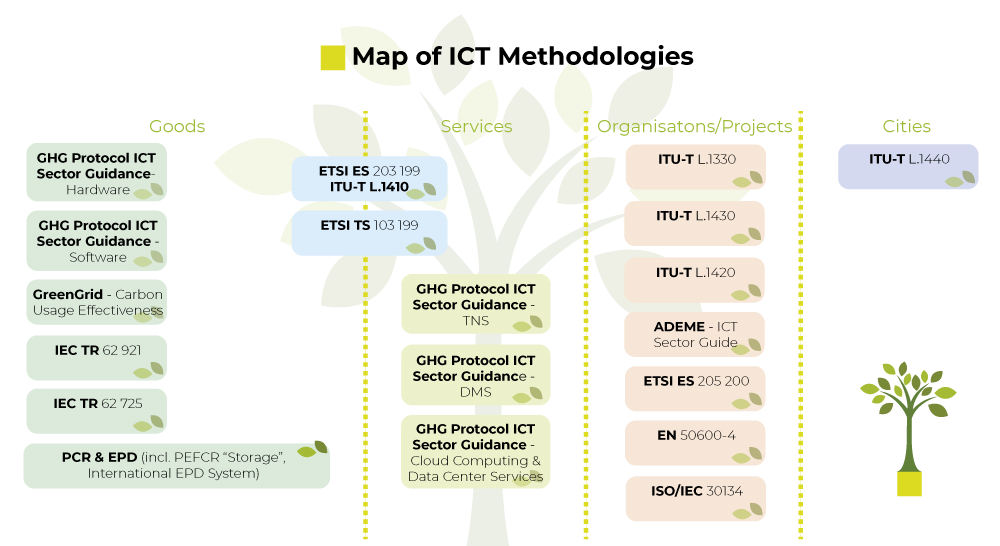
What are the ICT Standards?
Today, there are several ICT carbon and energy footprint Standards that can be used to assess ICT goods, services, and organisations. Several studies (mostly for DG CONNECT) investigated the comparability, practicability, and compatibility of this so-called ICT methodological framework. The Standards developed by JRC, ISO, the GHG Protocol, BSI, ETSI, ITU-T and ADEME/AFNOR are all suitable for being integrated into policy measures addressing the carbon and energy footprint of ICT.
If other environmental impacts are to be addressed, JRC PEF and OEF guides and ISO 14040 / 14044 are exclusively applicable, even though they are not specific to the ICT sector.
If other environmental impacts are to be addressed, JRC PEF and OEF guides and ISO 14040 / 14044 are exclusively applicable, even though they are not specific to the ICT sector.
Regarding the Information and Communication Technologies (ICT) sector, standards address especially the needs for interconnection and interoperability and are equally important for ensuring safety, reliability and environmental care.
What ICT standards are we looking at?
ICTFOOTPRINT.eu will address ICT standards regarding goods, services, organisations/projects and cities, distinguishing between:
- Life cycle based methodologies (which cover standards) focus on potential impacts on the environment (climate change, atmospheric acidification, etc.) and use of resources
- Other methodologies focusing on KPI like organisational carbon footprint calculation methodologies (which cover standards), i.e. indicators based on performance assessment (e.g. energy efficiency) or compliance to environmental and organisational criteria (e.g. qualitative evaluation of environmental hotspots)
In the case of ICT, the difference between product LCA & organisational carbon footprint is really relevant. For example, the guidance for the ICT sector published by the French environment agency (ADEME) or the methodology (and standards) developed by ITU are considered as organisation environmental accounting methodologies, while e.g. the GHG protocol ICT sector guidance or the methodology developed by ETSI are considered as product environmental assessment methodologies. However, it is more useful to think in terms of “building blocks”, as proposed by the GHG protocol sectorial guidance, because, for IT solutions, the distinction between organisation and product can be confusing.
The table below shows the relevant standards and their correspondent area of operability.




 © 2018 ICTFOOTPRINT.eu – ICTFOOTPRINT.eu has received funding from the European Commission’s Horizon 2020 research and innovation programme under the Grant Agreement no 690911. The content of this website does not represent the opinion of the European Commission, and the European Commission is not responsible for any use that might be made of such content.
© 2018 ICTFOOTPRINT.eu – ICTFOOTPRINT.eu has received funding from the European Commission’s Horizon 2020 research and innovation programme under the Grant Agreement no 690911. The content of this website does not represent the opinion of the European Commission, and the European Commission is not responsible for any use that might be made of such content.